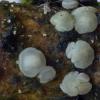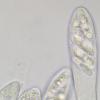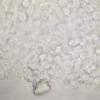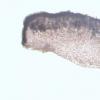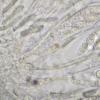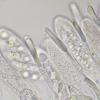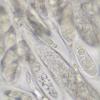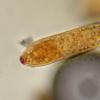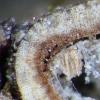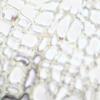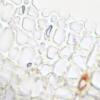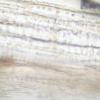
24-12-2025 17:08
Hulda Caroline HolteHello, I have found this propoloid ascomycete on

21-12-2025 09:32
Hello.A tiny ascomycete found embedded in wood in

21-12-2025 21:32
Pol DebaenstHello, Garden, Burgweg 19, Veurne, BelgiumOn 10/1

22-12-2025 23:38
Patrice TANCHAUDBonsoir, récolte sur un mur en pierre, apothéci

22-12-2025 00:47
Patrice TANCHAUDBonsoir, récolte à proximité du milieu dunaire
Pezicula-like
Andgelo Mombert,
19-06-2020 20:43

Bonsoir,
Sur branche morte de Euonymus europaeus, en situation aérienne. Besançon, Doubs, France. 18/06/2020.
Apothécies de 1-2 mm de diamètre, planes puis convexes, gris livide, sessiles, pruineuses, à marge finement villeuse dans la jeunesse.
Ascospores (mesurées dans les asques, pas de spores libres) : 19-25 x 5,7-7,5 µm, elliptiques, aseptées ou avec une cloison, hyalines, avec deux gouttes et plusieurs petites guttules, lisses.
Asques : 70-100 x 17-19 µm, claviformes, à sommet hémiamyloïde, avec crochet, contenant huit spores.
Paraphyses : dressées, renflées au sommet (4-4,5 µm), avec une vacuole réfringente.
Cellules de la marges semblables aux paraphyses, claviformes et avec une vacuole réfringentes.
La réaction hémiamyloïde rappelle le genre Pezicula... Merci pour votre aide !
Andgelo
Hans-Otto Baral,
20-06-2020 07:42

Re : Pezicula-like
Hi Andgelo
this species has VBs which Pezicula never has. The only "Pezicula" with VBs that I know is P. scoparia. It might belong in Rodwayella, where I have it at the moment, but it was described on Fabaceae (Cytisus) and nothing else. How certain is Euonymus?
If you are in doubt please try a macro- or microphoto of a cross section of the wood.
My feeling is that the sample in my folder (HB 9738) is conspecific with yours.
Zotto
Andgelo Mombert,
20-06-2020 21:11

Re : Pezicula-like
Bonsoir Zotto,
Merci pour ta réponse !
Tu me confirmes que ton dossier ''Rodwayella scoparia'' et Pezicula scoparia (Cooke) Dennis 1960 correspond au même champignon ?
Je suis certain pour Euonymus, mais je vais tenter de faire une photo.
Tout comme ta récolte HB 9778, j'ai vu des spores brunes septées. A quoi cela est dû ?
Andgelo
Hans-Otto Baral,
20-06-2020 23:01

Re : Pezicula-like
R. scoparia is an unpublished combination, but the placement there is highly tentative since the Rowayella genus is genetically difficult.
Brown septate spores also occur in Pezicula and many other genera. Usually they are overmature spores, and then the growth conditions determine their presence and the age their frequency.
So I am waiting for a wood section.
Andgelo Mombert,
21-06-2020 16:12
Hans-Otto Baral,
21-06-2020 16:23

Re : Pezicula-like
Of course alien, if it looks different to ascospores.
Cytisus is clearly excluded, surely also any other Fabaceae, while Euonymus indeed looks indeed similar.
